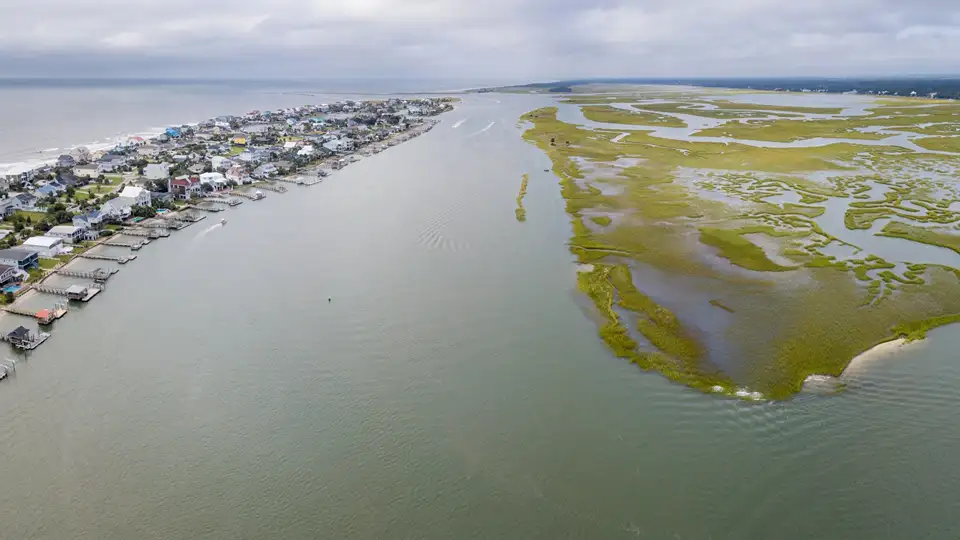Introduction: The Need for Coastal Protection
The Isle of Palms, a barrier island off the coast of South Carolina, is known for its picturesque beaches and thriving tourism industry. However, like many coastal communities, it faces persistent challenges from erosion and rising sea levels. Over time, storms and tidal activity have gradually worn away portions of the beach, threatening property, habitats, and public access.
To safeguard its coastline and local economy, the Isle of Palms city administration has launched a proactive plan to protect its shoreline through a large-scale beach nourishment project. This initiative reflects the community’s long-term commitment to maintaining both its natural beauty and resilience against coastal change.
What Is Beach Nourishment?
Beach nourishment, also known as sand replenishment, is a coastal engineering practice that involves adding sand or sediment to eroded beaches to restore their width and height. Rather than relying solely on hard structures like seawalls or groynes, nourishment provides a more natural and flexible approach to shoreline protection.
In essence, beach nourishment replenishes sand lost to waves, currents, and storms, recreating natural defenses that help absorb wave energy and prevent further erosion. For the Isle of Palms, this approach provides a sustainable way to enhance beach stability while preserving the island’s recreational and ecological value.
Current Challenges at Isle of Palms
Over the past several years, the Isle of Palms has faced increasingly severe erosion, particularly in the Port O’ Call, Beachwood East, and Breach Inlet areas. These zones have been identified as critical hotspots, where sand loss has led to steep beach profiles and reduced storm protection.
Ahead of the upcoming king tides in November, the city has taken short-term action by installing 700 additional sandbags to provide temporary stabilization. While sandbagging offers immediate relief, it is only a stopgap measure. The larger, long-term solution, comprehensive shoreline protection through nourishment, will ensure greater durability against coastal forces.
Details of the Upcoming Nourishment Project
The Isle of Palms beach nourishment project is a major infrastructure and environmental effort. It includes the placement of up to 2.5 million cubic yards of beach-quality sand along approximately 19,200 linear feet of shoreline at both ends of the island.
Sand will be dredged from offshore borrow areas located about 2 to 3.5 miles from the beach, ensuring that material quality closely matches the native sediment. This careful selection minimizes ecological disruption and maintains the island’s natural appearance.
With a projected budget of $25-$30 million, the project represents one of the largest coastal protection efforts in the region. Work is expected to begin as early as spring 2026, pending final permit approvals from state and federal regulatory agencies.
Environmental and Engineering Considerations
The Isle of Palms project underscores a balance between environmental stewardship and engineering precision. Before dredging begins, specialists will assess sediment composition, marine habitats, and potential turbidity effects. Using beach-quality sediment ensures that the new sand integrates seamlessly into the existing ecosystem, reducing harm to nesting sea turtles, shorebirds, and benthic organisms.
Moreover, modern dredging technology and sediment transport modeling are being used to optimize efficiency and reduce the environmental footprint. The city’s collaboration with coastal engineers and environmental consultants demonstrates a comprehensive commitment to shoreline protection that aligns with both ecological and community priorities.
Economic and Community Impacts
The Isle of Palms beach nourishment initiative goes beyond environmental benefits—it’s also an economic investment. Healthy beaches are the backbone of the island’s tourism economy, attracting visitors, supporting local businesses, and enhancing property values.
By restoring and widening the beach, the project will improve recreational spaces, protect beachfront homes, and reduce storm-related damage. In the long run, this proactive approach to shoreline protection helps save on future disaster recovery costs and ensures the sustainability of the local economy.
Public engagement is also a cornerstone of the plan. The city has encouraged residents and stakeholders to stay informed and participate in community discussions as the project progresses.
Timeline and Future Outlook
The Isle of Palms has already initiated preparatory steps, such as securing permits and identifying suitable offshore sand sources. Once regulatory approval is finalized, construction will proceed in phases, prioritizing the most vulnerable sections first.
The expected start in spring 2026 aligns with favorable weather and tidal conditions, ensuring optimal efficiency and minimal disruption to the beach’s recreational use.
Looking ahead, the city plans to monitor sand movement, shoreline evolution, and ecological recovery after nourishment. These monitoring efforts will provide valuable data for future shoreline protection strategies, reinforcing the island’s resilience to erosion and climate impacts.
Conclusion: Building a Resilient Coastline
The upcoming nourishment project represents a significant milestone in the Isle of Palms’ long-term coastal management plan. By integrating scientific planning, environmental responsibility, and community collaboration, the city is setting a model for sustainable shoreline protection.
As coastal communities across the nation face growing threats from sea-level rise and storm intensification, the Isle of Palms stands out as a proactive example of how thoughtful investment and planning can preserve both natural beauty and economic vitality for generations to come.
